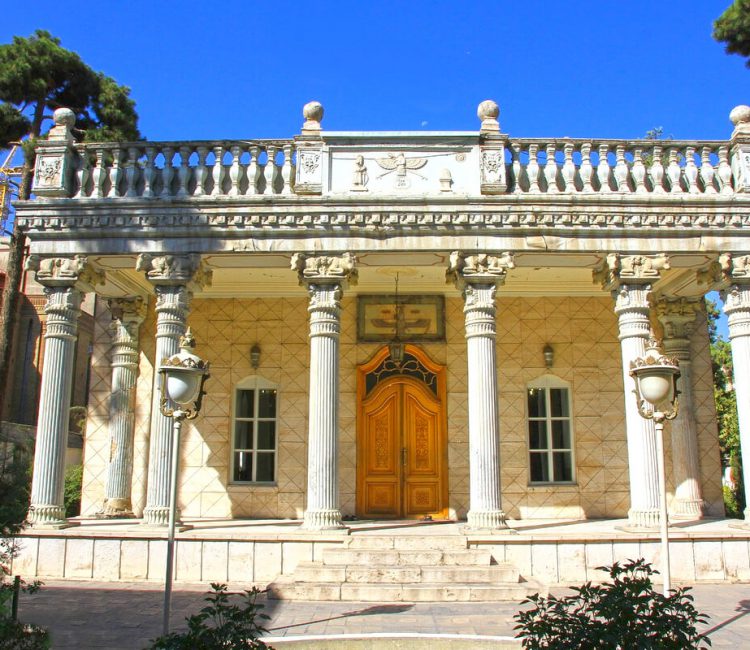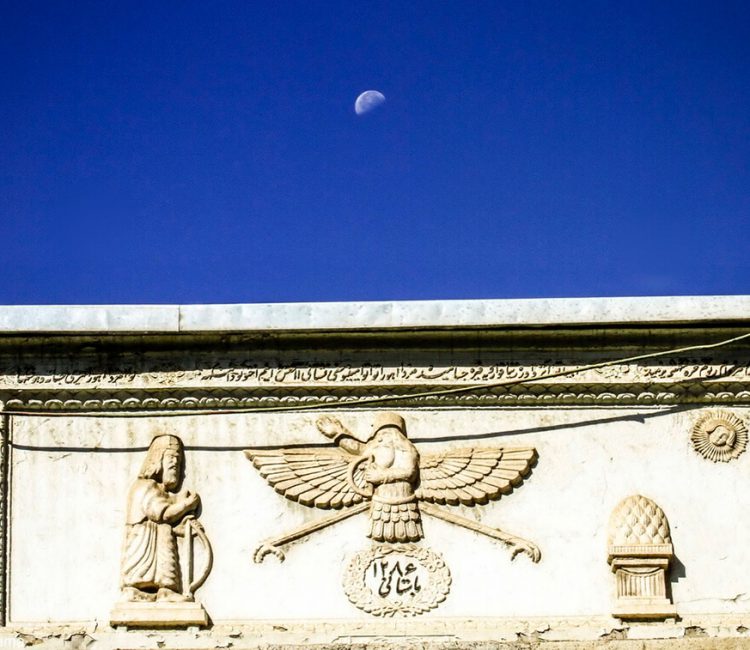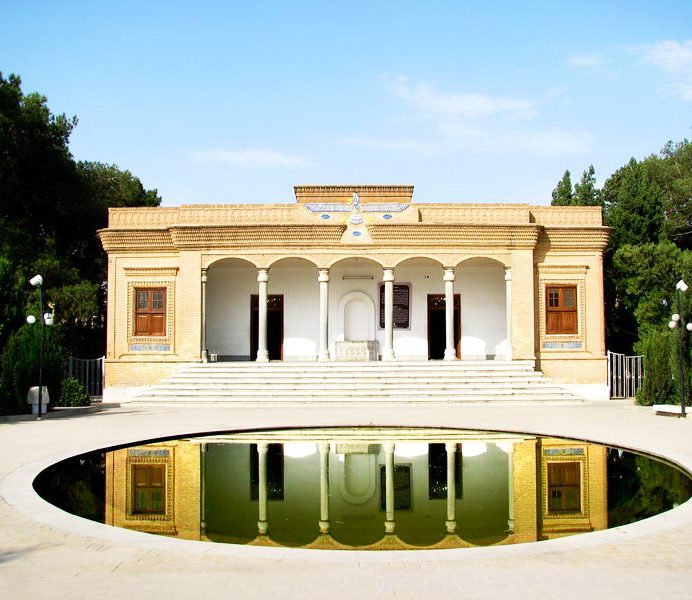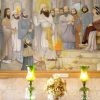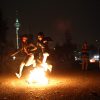Table of Contents
Fire Temples that You must See in Iran:
Imagine yourself in a vast land, accompanied by a large group of people. You are all clad in white robes, standing in finely organized lines. Close to these neat lines, a stream of water flows which stretches up toward two colossal platforms right in front of you.On each of these platforms, there is a huge fire flaming high up into the sky. And the whole area is guarded by priests, all of them also wearing white robes. The high priest is standing near the platforms, in the humblest form, waiting for the king of kings and the beginning of the religious ritual. You can see all of these in Zoroastrian fire temples in Iran.
And that is how Zoroastrian religious rituals were held in the Sacred Land, in the vicinity of Pasargadae. As historians say, up to the 4th century BC, all the Zoroastrian religious rituals, just like what happened in the Sacred Land, were held in open spaces.
However, at the time of Artaxerxes II, the tenth Achaemenian king, the tradition of celebrating religious ceremonies in open spaces came to a halt. Instead, they began to be performed within roofed buildings.
With the advent of Sasanian dynasty, when Zoroastrianism turned into the official religion of Iran, a plethora of fire temples came into being, especially in southwestern Iran (Fars, Kerman, Araq-e Ajam). It is not bad to know that the fire temples of the mentioned period were known as Chahar-Taqi (or four arches), the biggest and most impressive of them being those of Adur Gushnasp in Azerbaijan.
By the way, let us leave history alone and stick to practical matters. In this article, I am going to introduce four modern fire-temples, generally known as Darb-e Mehr (the Gate of Mehr), in which you can get a live knowledge and experience of Zoroastrianism, its ceremonies, its priests (called Moubad) and many more other things.
Tehran: Adrian Fire Temple
For long years, Tehran lacked any fire temple and its Zoroastrians had no choice but to grieve over the absence of a communal place where they could perform their religious duties. However, during the last years of Qajar dynasty, Arbab Keikhosrow Shahrokh (1875-1940), the chief of the Zoroastrian association of Tehran at the time, decided to build a fire-temple to end the pain tormenting his people day after day.
To raise funds, Arbab Keikhosrow met with Bahramji Bikaji, the chief of the Zoroastrian association of India, and a number of other Iranian and Indian Zoroastrians who were likely to support him in this grand project.
Finally, enough money arrived and the construction of Tehran’s first fire-temple began on 13 august 1914. At last, after three years of hard work, the Zoroastrian fire-temple of Adorian saw the light of day in 1917.
Well, now that we have the fire temple, let’s go and have a look at it. The Qajarid fire-temple of Adorian includes five buildings, built over a piece of land measuring 1300 square meters. It is mainly used for the performance of religious rituals, but other events, such as wedding ceremonies and memorials, are also held at this fire-temple.
The outer façade of Adoriyan fire temple is adorned with fine rows of red-brown brick. Also, above its entrance door, sits a marble relief of two angels carrying the inscription: “For the Pleasure of Ahura-Mazda”.
Entering the courtyard, you will find yourself in a small, shadowy garden, bedecked with flower beds, tall trees and a big, round pool.
Behind the pool, there is the main building of the fire-temple, decorated with white stones and a front porch of six tall columns. Each capital is shaped in the form of a bull, representing livelihood and productivity. In addition, the columns also bear symbols of happiness in Zoroastrian culture, that is, the fruit and leaves of the grape tree.
The interior space of the main building is decorated with marble stone and stucco work, painted with gold and copper colors. In the middle of this building, there is a four-sided chamber, surrounded with arched, glass windows. The holy fire, brought from Yazd in 1878, is kept in a copper altar in this chamber.
However, you should be aware that no one is allowed to enter this room except the Zoroastrian fire keepers. For this reason, seats are arranged around the chamber for prayers, with a special place reserved for the high priest (or Moubad) on the left side.
Yazd: Atashkade or Fire Temple of Yazd
Since the architectural plan of Atashkadeh Yazd is so much similar to the Adorian fir-etemple, I am not going to go over the physical description of this fire temple. But, I should mention that above the porch of Yazd fire temple, there is a relief of Faravahar, the image of an old man with stretched wings, representing good words, good thoughts and good deeds.
Yet, what I have said doesn’t mean that you should skip visiting the fire temple of Yazd. Actually, the Adorian fire temple of Tehran is a replica of the latter one.
However, the importance of Atashkade Yazd lies somewhere else. Actually, this fire temple houses one of the holiest fires revered in Zoroastrianism, called Atash Bahrām or Victorious Fire. There are only nine Atash Bahrāms in the world, nine of them in India, and just one of them in Iran. Now, with this bit of information, you understand the importance of Yazd fire temple.
Now you may ask where this fire came from? Well, this fire was first housed in the Pars Karyan (or Azar Farnbagh) fire temple in Larestan, Fars province. It burned there for 700 years. Then, it was taken to the fire temple of Aghda, a city in Yazd province. After that, it was transported to Ardakan, another city near yazd. It burned in Ardakan for 300 years. And, it was after Ardakan that this fire found its way into Yazd itself. But, it didn’t go to the fire temple of Yazd straight away. First, it was kept in the house of the high priest of Yazd, Moubad Tirandaz Azargashsb, in Khalf Ali Khan neighborhood.
So the holy fire was kept in the house of Moubad Garshasb until the year 1934. In this year, a philanthropist called “Homa Bayi” paid for the construction of Yazd fire temple, on a piece of land donated by Amanat family in memory of their father. With the inauguration of this fire temple, the 1500 year-old Atash Bahram found its eternal resting place and has perched there, may be, forever.
So, be sure not to miss visiting this interesting fire of many stories.
Kerman : Kerman Fire Temple
Jamshid Khoda-rahmi Nersi Abadi, a business man from Mumbai, was traveling through Iran when he arrived at Kerman and decided to build a hostel for his fellow Zoroastrians. So, he bought half of the vast garden located in front of the national school of Zoroastrians and built a fire temple and prayer room in it. Then, Jamshid Khodarahm and the other owner of the garden donated the fire temple to the Association of Young Zoroastrians.
The main building of the fire temple is of brick and holds an inscription on its forehead, with the words “good words, good thoughts, good deeds.” According to the high priest of the temple, it houses a holy fire which burnt in the fire temples of India for many years.
Primarily, the fire temple of Kerman measured about 4000 square meters, but it was later expanded to 8000 square meters. Now, it includes several different parts such as a conference room, a dining room, a computer center and … .
However, one of the most important parts of Kerman fire temple which deserves special mention is its anthropological museum. To understand the importance of this museum, it suffices to say that it bears the title of the first Zoroastrian anthropological museum in the world. It was inaugurated in 2005, with the efforts of Farzaneh and Hormozdyar Ashidary and Mahindokht Siavashian.
The Zoroastrian anthropological museum of Kerman includes different types of fireplaces, lamps and oil burners. It also showcases different clothes of Zoroastrians, dating back to 50 to 150 years ago. The highlights of the museum are a holy book of Zoroastrians dating back to 200 years ago and a fireplace with an inscription which dates it back to 1828.
If you are in Kerman, don’t hesitate about visiting this museum.
Isfahan: Darb-e Mehr-e Gohar va Mehraban fire temple
During the Safavid period, there was a neighborhood on the southern bank of the Zayandeh Rood river, known as Gabr Abad, which housed Isfahan’s Zoroastrians and their fire temples. But, at end of Safavid period, they suffered a massive massacre at the hands of Shah Soltan Hossein Isfahan, with a death toll of nearly 20,000 people. After this brutal massacre, the remaining Zoroastrians fled to Yazd and Isfahan lived without its Zoroastrian dwellers for years.
It was not until the year 1951 that a small group of Zoroastrians returned back to live in Isfahan. Then, in the year 1987, the ladies Mehrangiz and Parvin Mehrbani built the current fire temple of Isfahan in memory of their mother and father, Gohar Bahram Goshtasbpour and Mehraban Rostam Mehrabni. For this reason, the fire temple of Isfahan is called Darb-e Mehr-e Gohar va Mehraban.
Passing through the high entrance door of Darb-e Mehr-e Gohar va Mehraban, flianked by two huge lions and reminding one of the “Gate of all Nations” in Persepolis, you enter a vast, simple hall, decorated with shiny, gray stones. There are a number of rooms in this hall, used as offices and other functional units.
If you look carefully, at the end of this hall, you will see the holy fire burning in a glass case, in its background a picture of Zoroaster, preaching at a king’s court. A wonderful juxtaposition of holy elements!
Also if you are interested to know more about Zoroastrianism we recommend you to read:
Interesting Zoroastrianism Facts that You better Know about Them.
If you are interested to experience and know more about Zoroastrianism and its traditions, plus visiting a fire temple in Yazd, the city registered in UNESCO world heritage, please click here.



